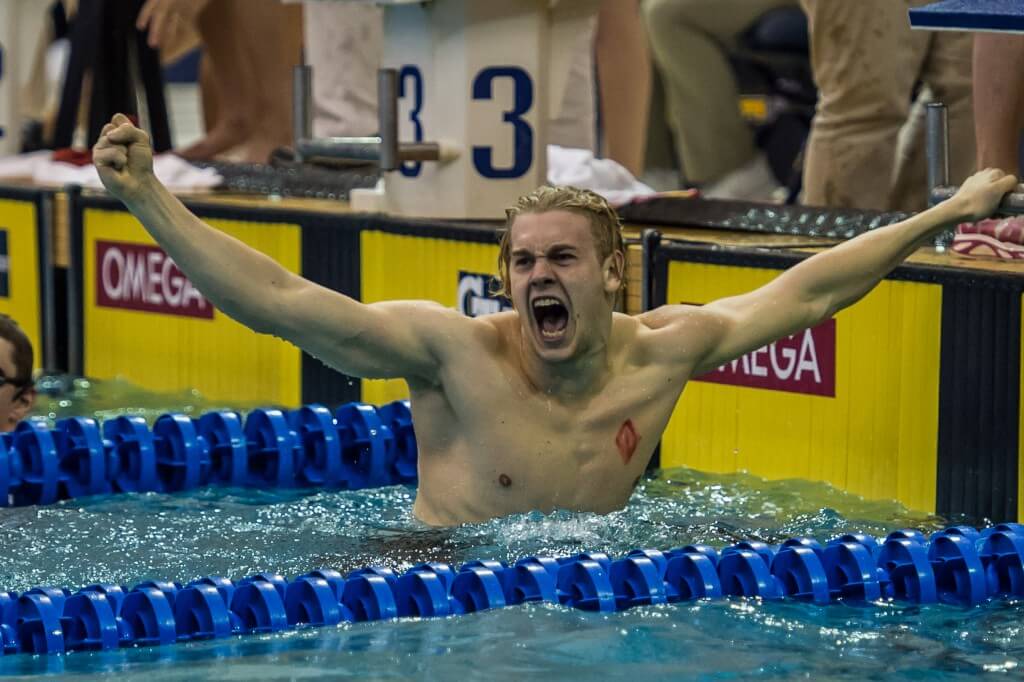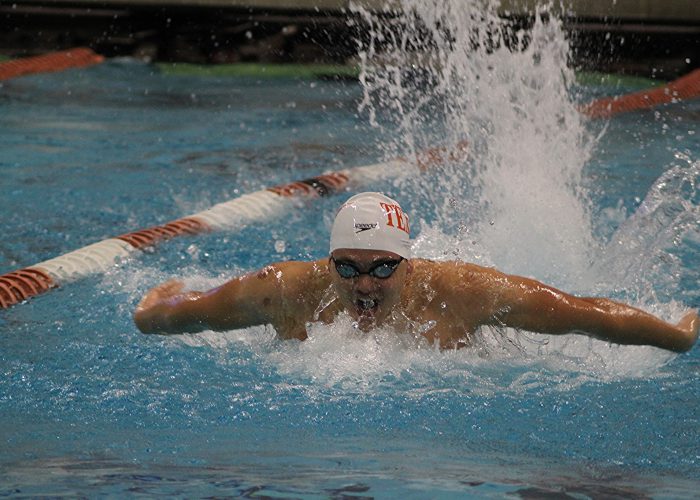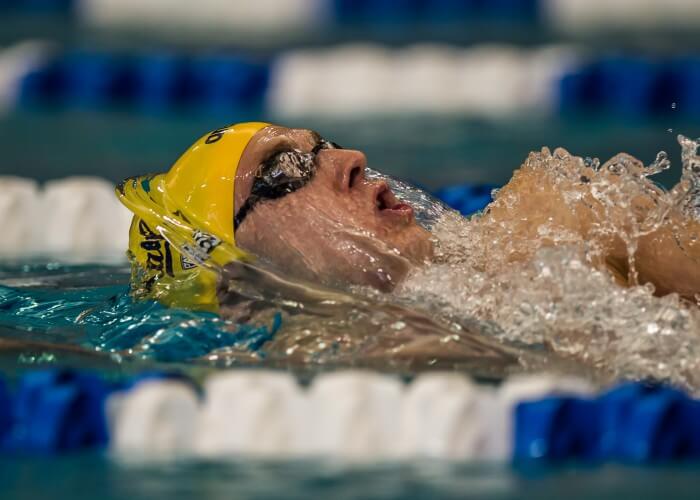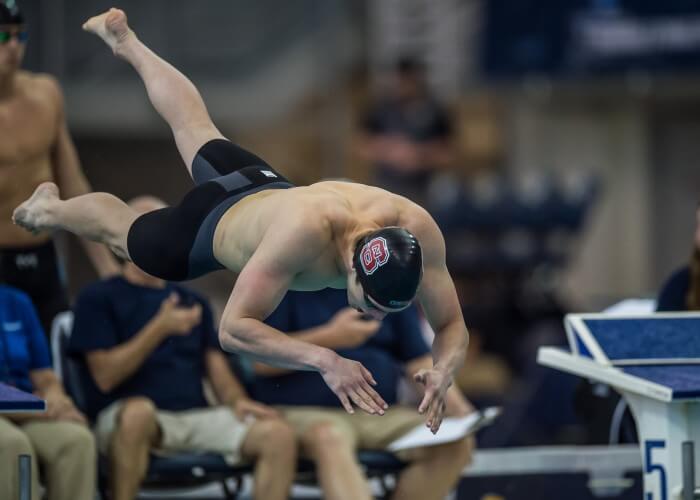Three Teams Set to Challenge for Men’s NCAA Championship

NCAA DI editorial coverage is proudly sponsored by Adidas. Visit adidasswimming.com for more information on our sponsor. For all the latest coverage, check out our event coverage page.
 CLICK HERE FOR LIVE RESULTS
CLICK HERE FOR LIVE RESULTS
By Lander Eichholzer, Swimming World College Intern.
The NCAA men’s swimming and diving championships are roughly two months away, meaning it’s not too soon to take a look at which teams will battle for a National Championship in the coming weeks. Texas, California and North Carolina State have been impressive through the first month of 2017, but there is plenty of quick swimming on the horizon.

Photo Courtesy: Andy Ringgold / Aringo Photos
Texas dominated the 2016 NCAA Championships, beating second place Cal by 190.5 points. Despite leading the nation in the 200 freestyle relay, the Longhorns also have 800 freestyle and 200 medley relays ranked 7th and 14th, respectively. While Texas should qualify all its relays for NCAAs with ease, Texas coach Eddie Reese may try and improve his team’s national rankings at the Big 12 Championship meet.
Furthermore, the Longhorns only have two swimmers ranked in the top 30 in the country in the 50 freestyle and one of those men (Jack Conger) is almost certain to take on other events at NCAAs. Still, Texas has a substantial number of men set for NCAA invitations. The Longhorns are also set to welcome back Olympic champion Joseph Schooling for the spring semester, instantly improves Texas’ outlook.

Photo Courtesy: Peter H. Bick
The Cal Golden Bears are lead by workhorse Ryan Murphy, the premier backstroker in the world. Murphy leads the nation in the 100 and 200 backstroke by wide margins and could contend in an event like the 200 IM, where he was third at NCAAs last year. If Murphy can upset Texas star Will Licon in the 200 IM, that could be vital points in what looks like a much closer meet this season.
Sprinter Pawel Sendyk has been a revelation for the Golden Bears, sitting third in the NCAA in the 50 freestyle after not having a point scored in that event a year ago. Even though Sendyk does not show great range to the 100 freestyle, he should score in the top 8 in the 50 and provide vital relay legs.

Photo Courtesy: Peter H. Bick
For their part, North Carolina State, are known for their sprint group. Ryan Held leads the Wolfpack by sitting second in the nation in the 50 and fifth in the 100 freestyle. The graduation of Lithuanian Olympian Simonas Bilis certainly hurts, and the Wolfpack only have one other swimmer (Justin Ress, 48th) ranked in the top 50 in the nation or the 50 or 100 freestyle. Hennessey Stuart could improve his fifth place finish in the 200 backstroke from last year’s NCAAs with a second place national ranking in that event right now. However, it doesn’t appear any man in the NCAA will upset Murphy this spring.
For their part, the Stanford Cardinal have three of the top five swimmers in the country in the 500 free and swimmers five to seven in the 400 IM. The Cardinal are swimming better than they have in years and look set to blow away last year’s 14th place NCAA team finish. Florida is also a threat for a podium spot, though the team will have to improve the position of its relays at SECs to defend its third place finish from a year ago.
As it often does, the NCAA title may come down to diving. Despite losing former NCAA Champion diver Michael Hixon to transfer last year and springboard specialist Cory Bowersox to graduation, the Longhorns do return Mark Anderson for his senior season. Anderson is one of the rare divers able to score on the springboard and the platform events, and no other team in NCAA title contention is poised to score in diving. Texas remains the NCAA title favorites on account of the team’s depth and versatility, though the meet should be much closer than a year ago.
All commentaries are the opinion of the author and do not necessarily reflect the views of Swimming World Magazine nor its staff.





